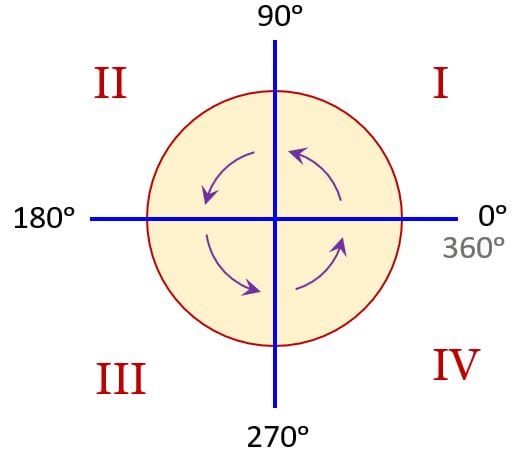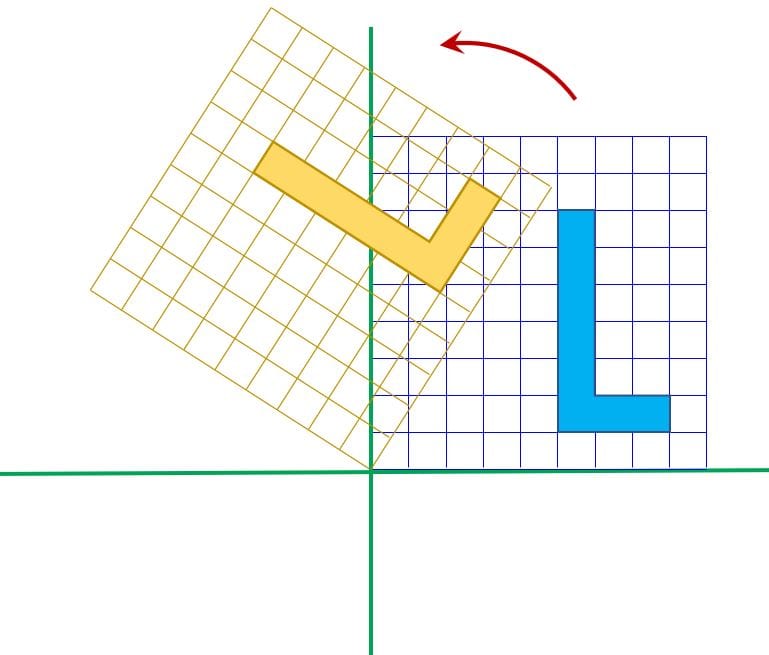Rotation occurs when an object is turned around a fixed point.
This point is called the center of rotation.
We need three things to describe a rotation.
1) The direction of the rotation (clockwise [negative] or anti-clockwise [positive])
2) The angle: (90ᵒ (¼ turn), 180ᵒ (½ turn), 270ᵒ (¾ turn))
3) The center of rotation (this is the fixed point about which an object moves, always give as a coordinate).
When working in the coordinate plane, assume the center of rotation to be the origin.
————————————————————————————————————-
Clockwise means moving in the direction of the hands on a clock. “The clock hands rotate in a clockwise direction“.
Rotations in the coordinate plane
In a Coordinate Plane, angles are measured counterclockwise, as shown.
An angle measured counter-clockwise is positive, and an angle measured clockwise is negative.
Rotations (counterclockwise)
Rotation of 90ᵒ (X,Y) → (-Y, X)
When a point rotates 90⁰, (a quarter turn) the X and Y values SWITCH places, and the Y becomes the opposite (sign changes).
The reason the X and Y values switch places is due to the X-axis and Y-axis switching places during the rotation. See the figure.
Rotation of 180ᵒ (X,Y) → (-X,-Y)
When a point rotates 180⁰ clockwise, you will need to apply the rule (x, y) → (-x, -y).
In other words, the coordinates are the same, but the signs are different.
Rotation of 270ᵒ (X,Y) → ( Y,-X)
When a point rotates 270⁰, (three-quarters turn) the X and Y values SWITCH places, and the X becomes the opposite (sign changes).
Rotation Rules
counterclockwise |
rule |
clockwise |
90⁰ |
(X,Y) → (-Y, X) |
270⁰ |
180⁰ |
(X,Y) → (-X,-Y) |
180⁰ |
270⁰ |
(X,Y) → ( Y,-X) |
90⁰ |


